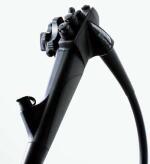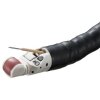Endoscopy: A new beginning for endoscopy
by Keith Loria, Reporter | August 12, 2010
Endoscopy
"Our aim is to create endoscopes that minimize the stress on patients and are user-friendly for physicians," said Haruhito Morishima, president for Olympus Medical Systems in a release sent to DOTmed News. "Capsule endoscopes have excellent potential from these perspectives. We see this joint development project with Siemens as the realization of one of our visions for the future of capsule endoscopes."
Herrmann Requardt, CEO of Siemens Healthcare, also expressed his thoughts on the partnership in a prepared release.
"In cooperation with our partner Olympus, we usher a new era in endoscopy," he said. "We believe that the magnetically guided capsule endoscope will enable quick examinations that are comfortable for the patient. This system will be an excellent addition to current methods in endoscopy, for instance within the scope of aftercare."
The capsule endoscope will be approximately 31 mm long and 11 mm in diameter. The system will utilize camera systems mounted at both ends of the capsule to allow observation inside the stomach. Real-time observation will be made possible by means of captured images transmitted immediately to an image processing system that will provide guidance information on the posture of the capsule endoscope as it is navigated using magnetic force.
A prototype is already in testing, and if all goes as planned, the capsule endoscopes could be rolling into hospitals before the end of 2011.
"This is definitely an exciting thing," says Darius Dziadosz, owner of Surcam, Inc., a direct repair service company for endoscopy cameras. "We are looking forward to it even though it will mean we will have more difficult repairs and [how to] invest in more sophisticated equipment. That's what keeps this business interesting."
Health care law
The impact on the increasing demand for endoscopes directly correlates with the new health care law, which purportedly will provide the funding for more people to undergo endoscopic procedures. To meet this anticipated demand and still keep an eye on finances, more and more health care centers are turning to third-party vendors to purchase their endoscopic equipment.










